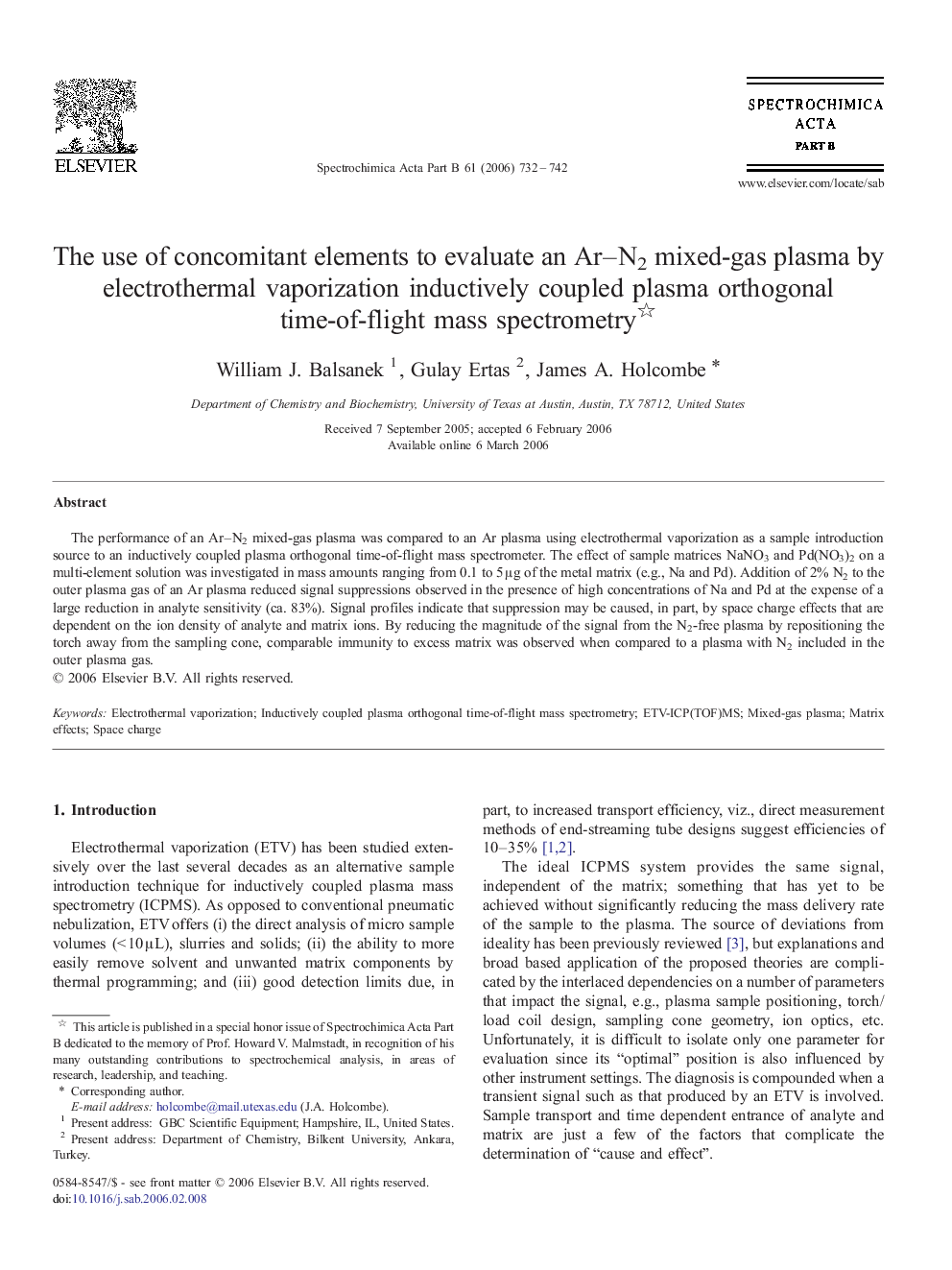| Article ID | Journal | Published Year | Pages | File Type |
|---|---|---|---|---|
| 1241045 | Spectrochimica Acta Part B: Atomic Spectroscopy | 2006 | 11 Pages |
Abstract
The performance of an Ar-N2 mixed-gas plasma was compared to an Ar plasma using electrothermal vaporization as a sample introduction source to an inductively coupled plasma orthogonal time-of-flight mass spectrometer. The effect of sample matrices NaNO3 and Pd(NO3)2 on a multi-element solution was investigated in mass amounts ranging from 0.1 to 5 μg of the metal matrix (e.g., Na and Pd). Addition of 2% N2 to the outer plasma gas of an Ar plasma reduced signal suppressions observed in the presence of high concentrations of Na and Pd at the expense of a large reduction in analyte sensitivity (ca. 83%). Signal profiles indicate that suppression may be caused, in part, by space charge effects that are dependent on the ion density of analyte and matrix ions. By reducing the magnitude of the signal from the N2-free plasma by repositioning the torch away from the sampling cone, comparable immunity to excess matrix was observed when compared to a plasma with N2 included in the outer plasma gas.
Related Topics
Physical Sciences and Engineering
Chemistry
Analytical Chemistry
Authors
William J. Balsanek, Gulay Ertas, James A. Holcombe,
